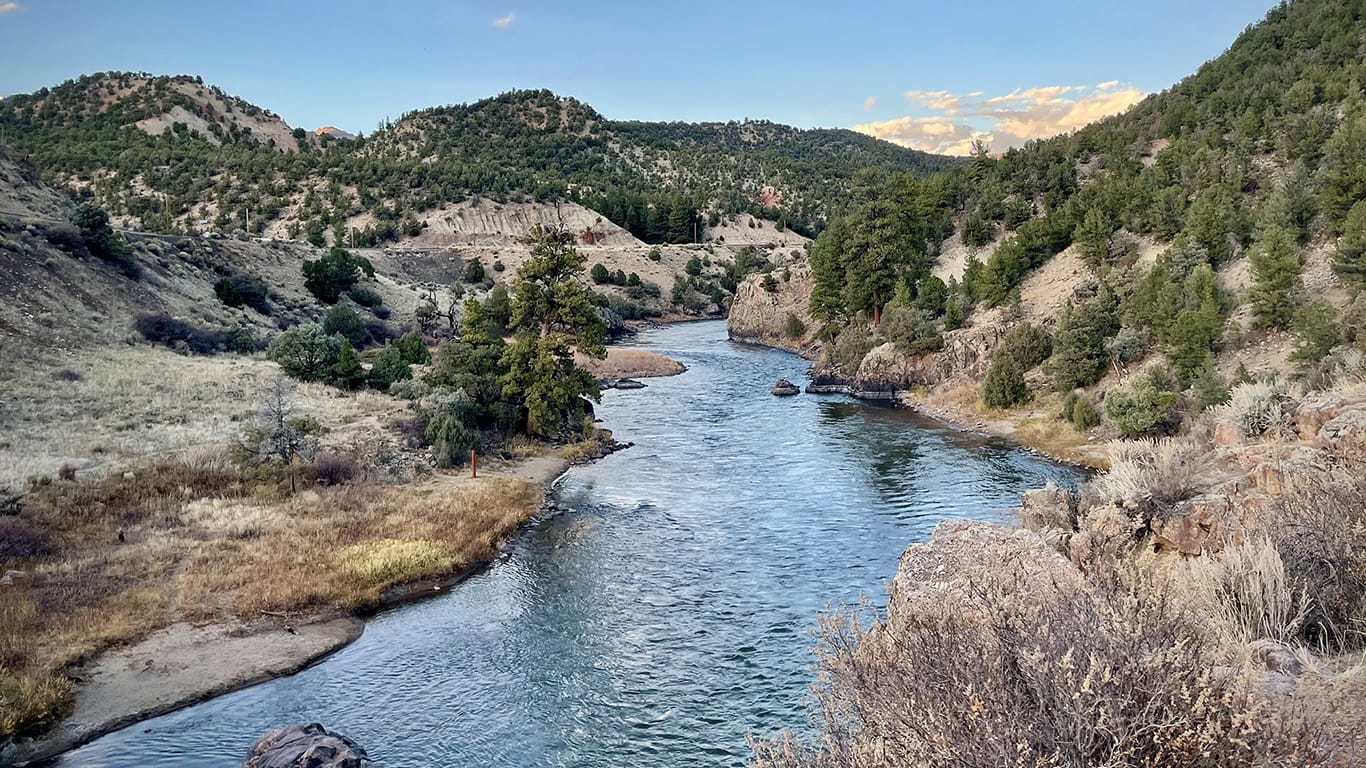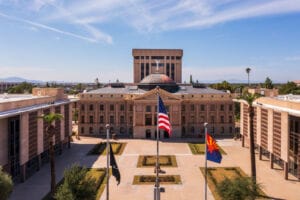A wet winter and a temporary water conservation agreement have eased some pressure on Colorado River planning and on policymakers, which is reflected in a new Bureau of Reclamation proposal that says the risk of critically low reservoirs remains but is “much lower.”
The bureau’s Supplemental Environmental Impact Statement, released this week, outlines water management plans until 2026 and reflects a shift away from short-term crisis management toward a more permanent rewrite of rules for how the river is shared.
LEARN MORE: Will water and capital concerns cool white-hot industrial market?
For the past few years, the seven states that use water from the Colorado River had been stuck in a kind of emergency mode. Continued high demand in the face of a historic drought have been sapping the water supply for tens of millions of people in those states. Falling levels at the nation’s largest reservoirs forced water managers to come up with short-term conservation measures to protect dam infrastructure.
Now, those water managers – a group of seven state-appointed negotiators – have more bandwidth to focus on replacing long-term rules for divvying up the river.
The 700-page document released this week revises a supplemental environmental impact statement from April that envisioned several alternatives to protect Lake Mead and Lake Powell, and the hydroelectric dams they serve. Reclamation is the federal agency that operates major dams and reservoirs across the West.
Since April, however, there have been two major changes that called for a revision: More water from Mother Nature and a plan from the lower basin states of Arizona, Nevada and California agreed that could save 3 million acre-feet of Colorado River water by 2026. An acre-foot is the amount of water needed to fill one acre of land one foot deep, generally provides enough water for one to two households for a year.
The main change since April is the inclusion of water data from a wet winter in the mountains. Winter precipitation in the Colorado River’s upper basin – where snowmelt accounts for most of the river’s total water supply – was 21% higher than average last winter. That raised water levels in Lake Powell from a record-low 22% of total capacity to 40%.
The other difference is the conservation agreement between the lower basin states, which are occasionally at odds over how to share water. In this instance, they committed to conserving up to 3 million acre-feet by 2026, in exchange for money from the federal Bipartisan Infrastructure Law.
The current set of rules expires in 2026. The Colorado River basin also includes 30 federally recognized tribes, which have long asked for a greater voice in water negotiations, and are still pressing for a more formal role in ongoing talks. Despite holding rights to about a quarter of the river’s flow, many tribes lack the funding and infrastructure to use their full allocations.
Despite Reclamation and the states highlighting a short-term conservation deal as a means of enabling relatively calm times in the Colorado River negotiation space, policy analysts say the wet winter is doing the heavy lifting.
“Mother Nature totally made this possible,” said Kyle Roerink, director of the nonprofit Great Basin Water Network. “What I really see this as is a victory lap, a pat on the back, a feather in the cap for Reclamation and the states for avoiding litigation.”
Experts have warned that failure to reach agreement on water cutbacks could end in lawsuits between the states and federal government, an outcome which those stakeholders say they want to avoid.
The draft released this week perhaps illustrates positive changes in the process by which the future of the river is being negotiated, said Jennifer Pitt, director of the Audubon Society’s Colorado River Program. She said a publicly available document and a public comment period are an improvement from the “windowless conference rooms” of decades past.
“The science is telling us that, in the long term, we’re going to see a drier basin, so we need to make decisions about how to manage less water,” Pitt said. “I think it’s extremely important that we get good at doing that through good public process that lets all stakeholders weigh in on what that will look like.”
Details from closed-door negotiations about the post-2026 future of the river are still fairly sparse, but John Berggren said Reclamation’s latest document hints at some positive developments in Colorado River negotiations. Previously, he said, states were less likely to propose conserving millions of acre-feet as the lower basin states did.
“It’s a short-term, small thing, but it helps illuminate how the states have evolved and are going to continue to evolve in their thinking going forward for that long-term process,” said Berggren, who studies water policy at the conservation group Western Resource Advocates. That group receives funding from the Walton Family Foundation, which also supports KUNC’s Colorado River coverage.
Long-term negotiations are still likely to be tense, as states are reluctant to cut back on water use without promises that other states will do the same. At the same time, farmers, growing cities, environmental advocates and tribes are also trying to have their needs reflected in the new set of river management rules.
“You know, there’s going to be a lot more wrangling and fighting over that long term process because it will be in place for decades,” Berggren said.




